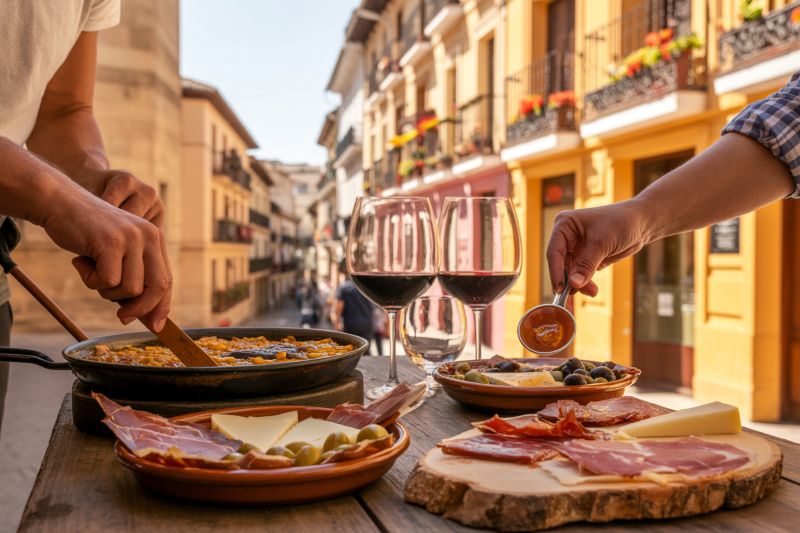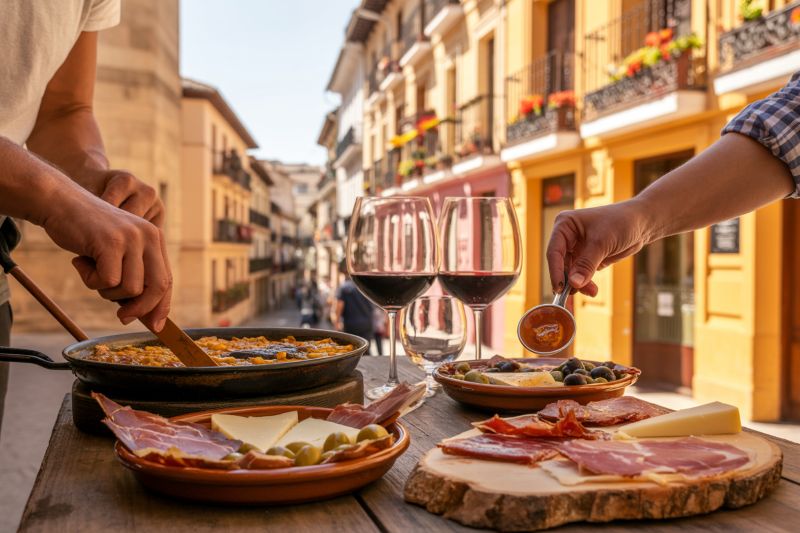Published on
October 28, 2025

The tourism economy in Spain is transforming, with growth now being led mainly by experience-based tourism, as lately suggested in new data presented at the 2025 Turespaña Convention. Cultural, active, nature, and gastronomic experiences are now at the center of Spain’s tourism. This highlights a new trend of tourists engaging with the country, shifting from mere sightseeing to experiences which are customizable and deep in the tourists’ focus.
Mabrian compiled the report by evaluating supply and demand in all 17 autonomous communities of Spain during the summer peak of June through August of 2025. This study is also the first to provide detailed national level insights into the experience-based tourism in Spain by leveraging data from prominent online experience providers such as Civitatis and GetYourGuide. The analysis reveals an increasing demand for sustained experiences that go beyond a mere excursion to a tourist attraction, offering insights into Spain’s cultural, natural, and gastronomic treasures.
Cultural Tourism Takes the Lead in Spain’s Experience-Based Offerings
The report reveals that cultural experiences dominate Spain’s tourism economy, accounting for 43.6% of all activities available online. This category includes a wide range of offerings such as heritage tours, museum visits, and historical walking tours, reflecting the immense appeal of Spain’s rich cultural heritage. Spain’s history, from ancient Roman ruins to Moorish architecture and modern art, provides an extensive array of cultural experiences that draw both domestic and international visitors.
Cultural tourism is the cornerstone of many of Spain’s most popular destinations, with Madrid, Barcelona, and Seville being key cultural hubs. The country’s unique combination of historical, artistic, and architectural treasures makes it a top choice for those seeking to explore its past while enjoying vibrant modern cultural scenes. For example, Madrid and Castilla-La Mancha have increasingly positioned themselves as destinations for cultural tourism, with a strong emphasis on museums, historical sites, and heritage landmarks.
Active and Nature-Based Tourism: Popular Among Adventure Seekers
While cultural tourism leads the way, active tourism and nature-based experiences have carved out a significant share of Spain’s tourism economy, representing 21.4% and 19% of all available activities, respectively. These sectors are increasingly popular among tourists who are looking for a more dynamic and adventurous way to engage with Spain’s diverse landscapes.
Active tourism includes activities like hiking, cycling, kayaking, and adventure sports, which are becoming popular across various regions of Spain. The Canary Islands and Aragón are particularly known for their active tourism offerings, including hiking in the rugged mountains of Gran Canaria and outdoor adventures in the Pyrenees. With Spain’s varied geography, from the Mediterranean coast to the rugged mountains, the country offers a range of destinations suited for outdoor enthusiasts.
Nature-based tourism is also gaining traction, with travelers seeking to explore Spain’s national parks, beaches, and rural areas. The Balearic Islands, known for their pristine landscapes and natural beauty, have become a hotspot for eco-tourism and sustainable travel. Nature-focused experiences such as wildlife tours, eco-friendly resorts, and hiking excursions have gained popularity, especially among travelers looking to connect with nature while enjoying Spain’s Mediterranean climate.
Gastronomy: A Growing Attraction for Food Lovers
Another major draw for tourists is gastronomic tourism, which accounts for 12.4% of all activities in Spain. The country’s culinary scene has long been a source of pride, and travelers are increasingly seeking out authentic food and drink experiences that reflect the rich local traditions and innovative cuisine of Spain. Wine tours in La Rioja, tapas tours in Seville, and food festivals in Barcelona are just some of the gastronomic experiences attracting both international tourists and food enthusiasts from around the world.
Spain’s diverse food culture, which blends regional flavors, Mediterranean ingredients, and international influences, provides tourists with endless opportunities to explore new tastes. In particular, La Rioja and the Basque Country stand out for their culinary offerings, with local food and wine traditions that are deeply rooted in the region’s history. The gastronomy sector is experiencing growing demand, particularly from tourists who want to not only taste but understand the history and culture behind Spain’s culinary creations.
Tourist Preferences and Regional Specialization
The report also highlights regional specializations in Spain’s tourism offerings, with certain regions excelling in specific types of experiences. For instance, Madrid and Castilla-La Mancha are known for their cultural tourism, while the Balearic Islands excel in nature-based activities. The Canary Islands and Aragón are leading destinations for active tourism, while La Rioja and the Basque Country attract visitors primarily for their gastronomic experiences.
This diversification of tourism offerings is contributing to the growth of Spain’s tourism economy, allowing each region to develop a unique identity that caters to different types of travelers. For example, couples tend to favor wine experiences in La Rioja and Extremadura, while families are more likely to visit destinations in Murcia, Navarra, and Aragón for more family-oriented outdoor adventures.
Tourist Satisfaction and Future Opportunities
The satisfaction ratings among tourists remain high across all categories, with an average score of 9.3 out of 10. Visitors from the U.S. provided the highest satisfaction ratings, followed closely by tourists from the UK, Germany, and Italy. This high level of satisfaction underscores the appeal of Spain’s experience-based tourism offerings, which are delivering exceptional value to travelers.
However, some sectors, particularly gastronomy, shopping, and wellness, received the highest satisfaction scores, indicating significant growth opportunities. This presents a chance for Spain to further invest in these areas to meet the evolving demands of tourists, particularly those seeking more specialized experiences.
The Role of Digital Platforms in Shaping Tourism Trends
According to the Mabrian report, online experience platforms such as Civitatis and GetYourGuide are playing an increasingly important role in connecting travelers with activities that reflect their personal interests. These platforms have made it easier for tourists to discover and book activities in real-time, contributing to the growth of experience-based tourism in Spain. As digital platforms continue to shape travel choices, tourism providers must focus on maintaining a strong online presence to attract the modern, tech-savvy traveler.
Spain’s Tourism Sector Poised for Continued Growth
Spain’s tourism sector is flourishing. There are plenty of cultural and gastronomic offerings and Spain is rich in nature. Every tourist can find what he is looking for. Tourists are looking for more and more sustainable tourism and authentic experiences and Spain keeps for offering those. Since tourism in Spain is continuing to lift its digital marketing and regional offerings so called “hidden gems” are certain to grow. Spain is well-positioned in all its offerings without a doubt to remain an outstanding destination.

